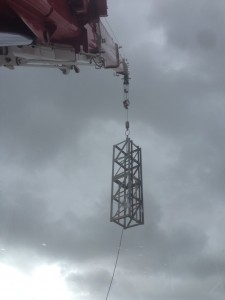CPCCLDG3001A Licence to Perform Dogging
CPCCLDG3001A Licence to perform dogging – Duration 5 Days plus pre-work.
(A Learner’s Workbook must be completed prior to the course in order to meet the course nominal hours. The Learner’s Guide & Workbook will be sent to you electronically at the time of enrolment).
Pre-requisites: Nil
| Unit descriptor | This unit CPCCLDG3001A Licence to perform dogging specifies the outcomes required to perform slinging techniques, including the selection and inspection of lifting gear and/or the directing of the crane operator in the movement of the load when the load is out of view of the crane/ operator for licensing purposes. |
| ELEMENT | PERFORMANCE CRITERIA |
| 1. Plan job. | 1.1. Site information is obtained and related to the task.1.2. Hazard s and potential hazards associated with the slinging and directing of loads are identified.1.3. Hazard control measures consistent with appropriate standards are identified to ensure the safety of personnel and equipment.1.4. The weight, dimensions and centre of gravity of the load are identified and assessed.1.5. Suitable lifting/slinging points on the load are identified.1.6. Appropriate lifting equipment needs are assessed.1.7. Appropriate communication methods are assessed with crane/ operators and other appropriate personnel.1.8. Manufacturer’s specifications/information is obtained for special loads where necessary. |
| 2. Select and inspect equipment. | 2.1. Lifting equipment appropriate to the task is selected.2.2. Lifting equipment is inspected for serviceability.2.3. Damaged or excessively worn lifting equipment is identified, labelled and rejected.2.4. Appropriate communication methods for the crane/operator and appropriate personnel are selected.2.5. Appropriate communication equipment is selected and its serviceability is checked.2.6. Appropriate personal protective equipment (PPE) is selected and checked. |
| 3. Prepare site and equipment. | 3.1. Hazard prevention/control measures are applied consistent with appropriate standards to ensure the safety of personnel and equipment.3.2. Appropriate slinging method is selected.3.3. Lifting equipment is prepared and assembled where appropriate.3.4. Load destination is prepared. |
| 4. Perform task. | 4.1. Lifting equipment is attached and secured to the lifting hook using appropriate techniques.4.2. Lifting hook is positioned over the load centre of gravity.4.3. Lifting equipment is attached and secured to the load in an appropriate manner.4.4. Tag line is attached and secured where appropriate.4.5. Test lift is conducted to ensure security of load.4.6. Load is moved maintaining stability and control at all times.4.7. Appropriate communication methods and communication signals are applied to safely coordinate the load movement both within sight and out-of-sight of crane operator.4.8. The load is landed to ensure that it is stable and secure from movement.4.9. Lifting equipment is removed or disconnected from load and prepared for next task or storage. |
| 5. Shut down job and clean up. | 5.1. Unserviceable lifting equipment inspected and rejected.5.2. Defective equipment is isolated and tagged.5.3. Lifting equipment is stored in accordance with procedures and appropriate standards.5.4. Hazard prevention/control measures are removed where appropriate.5.5. Excess materials from the work area are removed (where applicable).5.6. Defects are reported and recorded according to procedures and appropriate action is taken. |
 |


